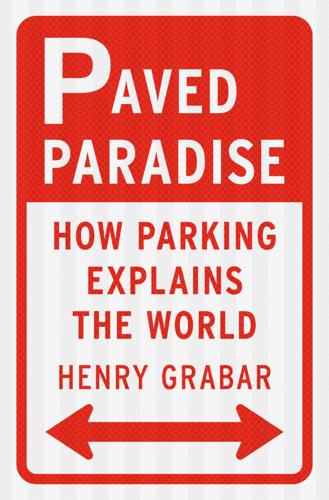
Paved Paradise: How Parking Explains the World
by
Henry Grabar
Published 8 May 2023
He invoked Swiss fountains and espressos en terrace, but he rarely extolled the charm of Georgetown or Society Hill or the verve of Bourbon Street or Michigan Avenue. Just as Jane Jacobs was mounting her popular and wildly influential defense of the messy, lively American urban neighborhood, Victor Gruen was bitterly on his way to the opposite conclusion: “American cities, with their comparatively short histories and small traditions, offered people little beyond traffic jams.” American car culture, and architects’ acquiescence to its demands, was becoming Victor Gruen’s bête noire. In 1960, the year after Kalamazoo, he gave a fiery speech to the annual gathering of the National Municipal League on “autocrazity”—the first of several new Gruenisms.
…
Go to note reference in text “American cities, with their comparatively”: Hardwick, Mall Maker, 218. Go to note reference in text “Autocratic fanatics have already”: Ben-Joseph, Rethinking a Lot, 91. Go to note reference in text The same year, he wrote: Victor Gruen and Herbert Askwith, “Plan to End Our Traffic Jam,” New York Times, January 10, 1960. Go to note reference in text “loosens the fabric”: Victor Gruen, The Heart of Our Cities: The Urban Crisis: Diagnosis and Cure (New York: Simon and Schuster, 1964), 124. Go to note reference in text “severe emotional shock”: Hardwick, Mall Maker, 157 Go to note reference in text “the ugliness and discomfort”: Hardwick, Mall Maker, 216 Go to note reference in text “gigantic shopping machine”: Neil R.
…
In a postwar report on “decentralization”—the flow of business, people, and money to the suburbs—the Urban Land Institute, the national organization of real estate developers, concluded that parking was “the most important single problem facing the central business districts of large cities today.” In retrospect, the claim seems laughable. But city planners acted accordingly. Cities sought to emulate the suburban parking model and very nearly destroyed themselves in the process. It was a method that even its biggest evangelist, the mall developer–turned–downtown savior Victor Gruen, would come to bitterly regret. You could draw a direct line from the crowded curbs of the start of the twentieth century to the volcanic wastelands that constituted many American downtowns by its end. The arrival of Henry Ford’s Model T in 1908, along with the subsequent improvements in durability and reliability that permitted year-round outdoor car storage, established parking as a major urban issue.
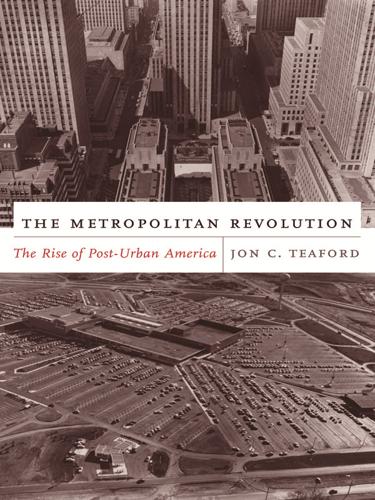
The Metropolitan Revolution: The Rise of Post-Urban America
by
Jon C. Teaford
Published 1 Jan 2006
Although racial and class fissures as well as political boundaries divided the metropolitan population, metropolitan Americans still shared a readily definable urban space with clear edges and an identifiable center. And in 1945 the powers that be sought to preserve that city. Wright presented what seemed a far-fetched alternative lifestyle; it was not a lifestyle that business leaders, planners, or city officials were prepared to embrace. 2 Reinforcing the Status Quo In 1956 architect-planner Victor Gruen presented his well-publicized and much lauded plan for rebuilding the central business district of Fort Worth. It was the culmination of twenty years of thought by American urban leaders and planners about how to thwart commercial decentralization and reinforce the existing single-focus city. In the plan, centripetal expressways carried traffic to a highway that looped around downtown Fort Worth.
…
Efforts to recentralize and bolster the commercial core did not halt the gradual shift of retailing to the suburbs. There was incremental racial change, with some opportunities opening for urban blacks; racial boundaries were not necessarily insuperable. Moreover, the suburban migration offered portents of a new way of life. Yet the vision of Victor Gruen was not that of Frank Lloyd Wright. The metropolitan revolution would not transform America overnight. Inherited expectations held a firm grip on the American mind, and the nation would only slowly yield to the wave of centrifugal and racial change. Bolstering the Center During the late 1940s and the first half of the 1950s, earlier concerns about decentralization became more acute, but a growing corps of business and political leaders as well as planners seemed confident that the urban core would hold and emerge as a revitalized focus of metropolitan life.
…
In most metropolitan areas there was no suburban center that posed a serious threat to the supremacy of the giant downtown emporiums in the marketing of apparel and accessories. In the mid- and late 1950s, however, a surge in the construction of ever larger and more elaborate suburban malls anchored by major department stores revolutionized American retailing. For example, in 1954 Northland Shopping Center opened in Southfield, north of Detroit. Designed by architect Victor Gruen and financed by Detroit’s largest department store, J. L. Hudson Company, Northland set a new standard for American malls. With one hundred stores along wide pedestrian malls and a Hudson’s outlet, Northland offered a quantity and quality of merchandise traditionally found only in the central business district.
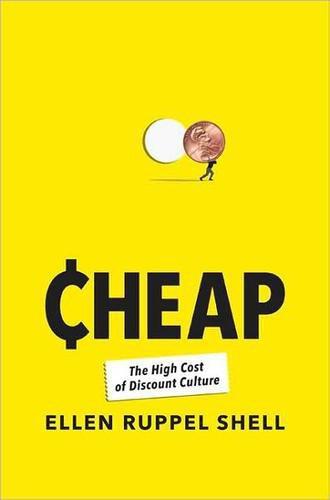
Cheap: The High Cost of Discount Culture
by
Ellen Ruppel Shell
Published 2 Jul 2009
Hanchchett traces the explosion in shopping malls to a loophole in the tax code that allowed for “accelerated depreciation,” which transformed real estate development into a lucrative tax shelter for developers. 91 avoid angering full-price retailers: Parke Chapman, “Bargain Hunters Keep Outlet Malls Humming,” National Retail Estate Investor 45, no. 4 (2003): 15. 92 “sky and landscape seemed to dance”: Zola modeled his fictional store after Le Bon Marche in Paris. Opened in 1852, it is widely referred to as the first modern department store. 92 “phobia of entering a store”: M. Jeffrey Hardwick, Mall Maker: Victor Gruen, Architect of an American Dream (Philadelphia: University of Pennsylvania Press, 2004), 32. 93 with brightly colored birds: Biographical information on Victor Gruen was obtained in “Victor Gruen: A Register of His Papers in the Library of Congress,” prepared by Harry G. Heiss, 1995. Available at http://lcweb2.loc.gov/service/mss/eadxmlmss/eadpdfmss/2001/ms001017.pdf; Malcolm Gladwell, “The Terrazzo Jungle,” The New Yorker, March 15, 2004.
…
Few if any shopping centers today can boast of velvet lakes, but many strive to offer at least the impression of luxury: soaring atriums, fashion shows, valet parking, a jazz band or high school choir performing on Sunday afternoon. The purpose of this embellishment is to seduce clients, to lure them in and set them up for the sale. Similar efforts stretch back half a century to the work of Victor Gruen, the undisputed father of the modern shopping mall. Gruen’s mark on America’s shopping landscape is as indelible as it was unexpected. Born and bred in the fabled elegance of turn-of-the-century Vienna, Gruen was a talented student destined for a life in the arts. An intellectual and aesthetic, he graduated from the Vienna Academy of Fine Arts, the venerable institution that rejected fledgling painter Adolf Hitler twice.
…
But between Gruen’s first triumph in Detroit and the shopping mall boom of the 1960s, consumer attitudes had shifted; consumerism was no longer just one among many forces driving change; it was the driving force. Gruen’s rosy optimism gradually soured as he watched his dream towns co-opted into symbols of suburban isolation and commercial manipulation. He returned to Austria in 1967, not heart-broken, exactly, but chastened and eager to redeem his legacy. He founded the Victor Gruen Foundation for Environmental Planning, based in Los Angeles, and its sister organization, Zentrum für Umweltplanung, in Vienna to promote environmental education for the improvement and protection of natural resources in urban areas. Gruen’s mark on the retail landscape was indelible. With their soaring atriums and sculpted gardens and cafés, his generous spaces tempted visitors to linger, and that was the point.

Wonderland: How Play Made the Modern World
by
Steven Johnson
Published 15 Nov 2016
Today malls have a mostly well-deserved reputation for being the ugly stepchild of consumer capitalism, but their intellectual lineage is more complex than most people realize. While it would come to epitomize the cultural wasteland of postwar suburbia, the shopping mall turns out to have been the brainchild of an avant-garde European socialist named Victor Gruen. Born in Vienna around the turn of the century, Gruen grew up, as his biographer M. Jeffrey Hardwick put it, “in the dying embers of [Vienna’s] vibrant, aesthetic life.” He studied architecture at the Vienna Academy of Fine Arts, working under the socialist urban planners then in vogue, and performing in cabarets at night.
…
The new storefronts delighted consumers and merchants alike, though critics like Lewis Mumford grumbled that the facades captured their customers the way “a pitcher plant captures flies or an old-style mousetrap catches mice.” During the 1940s, Gruen’s design practice boomed; he built dozens of department stores across the country. Echoing Le Corbusier’s famous line about a house being a “machine for living,” Gruen began calling his store environments “machines for selling.” Victor Gruen Yet Gruen never fully left his Viennese radical upbringing and its faith in the potential of large-scale planned communities. He hated the noisy, crass commercialism of unregulated spaces. He had an urbane European’s disdain for American suburbia. In the late 1950s, Gruen gave a speech in which he denounced the banal landscapes of the postwar suburbs, calling them “avenues of horror . . . flanked by the greatest collection of vulgarity—billboards, motels, gas stations, shanties, car lots, miscellaneous industrial equipment, hot dog stands, wayside stores—ever collected by mankind.”
…
“Dazzling and sensuous, the Bon Marché”: Michael Miller, The Bon Marché: Bourgeois Culture and the Department Store, 1869–1920 (Princeton, NJ: Princeton University Press, 1981), 162. “department store thefts”: Quoted in Miller, 202–8. “a pitcher plant”: Quoted in M. Jeffrey Hardwick, Mall Maker: Victor Gruen, Architect of an American Dream (Philadelphia: University of Pennsylvania Press, 2004), 33. “avenues of horror”: Quoted in Malcolm Gladwell, “The Terrazzo Jungle. Fifty Years Ago, the Mall Was Born. America Would Never Be the Same,” The New Yorker 15 (2004). “Southdale was not a suburban alternative”: Ibid.
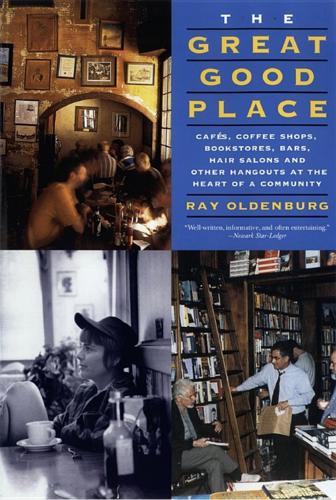
The Great Good Place: Cafes, Coffee Shops, Bookstores, Bars, Hair Salons, and Other Hangouts at the Heart of a Community
by
Ray Oldenburg
Published 17 Aug 1999
One marvels at both the depth and quantity of her insights. Well within the Jacobs’ tradition and appearing the same year as my contribution was Roberta Gratz’s The Living City. Gratz’s book contrasts grass roots successes at rebuilding neighborhoods with the disasters wrought by “urban renewal.” Victor Gruen’s The Heart of Our Cities is still a book worth not only owning but using as a reference work for all aspects of urban and neighborhood development. Gruen is the man who conceived and planned our nation’s first covered shopping mall. He came to reject the designation, “father of malling” because his plan was stripped down to commercialism only.
…
Harris comments: “The American does not walk around to the local two or three times a week with his wife or with his son, to have his pint, chat with the neighbors, and then walk home. He does not take out the dog last thing every night, and break his journey with a quick one at the Crown.”2 The contrast in cultures is keenly felt by those who enjoy a dual residence in Europe and America. Victor Gruen and his wife have a large place in Los Angeles and a small one in Vienna. He finds that: “In Los Angeles we are hesitant to leave our sheltered home in order to visit friends or to participate in cultural or entertainment events because every such outing involves a major investment of time and nervous strain in driving long distances.”3 But, he says, the European experience is much different: “In Vienna, we are persuaded to go out often because we are within easy walking distance of two concert halls, the opera, a number of theatres, and a variety of restaurants, cafés, and shops.
…
“These later gatherings,” wrote Warner, “were either meeting places of specialists and thereby encouraged only the brokers’ or downtown merchants’ view of the city, or they were closed organizations which directed their members’ attention inward toward the sociability of the group.”9 Ushered away from the informal gathering places of ordinary citizens by those with greater means and special interests, American politicians became insulated from the electorate. The spatial design of our centers of government accentuated the problem. As the architect Victor Gruen has observed, we construct “civic centers that are concentration camps for bureaucrats, who are thus prevented from mingling with common folks.” That, suggests Gruen, “may explain why they lose their touch with and understanding of the problems of the latter.”10 Today’s politicians maintain contact with their constituency through the media.

Makeshift Metropolis: Ideas About Cities
by
Witold Rybczynski
Published 9 Nov 2010
Chicago’s Civic Center (now Daley) Plaza fared somewhat better, although it never quite managed to achieve the status of a great public place. Vertical living, cultural complexes, and large plazas were integral to Le Corbusier’s urban ideal; so was separating cars from pedestrians. Traffic separation had been introduced to American downtowns by the Viennese-born architect and planner Victor Gruen in his 1956 plan for Fort Worth, Texas, which provided raised decks for pedestrians. Although the proposal was not implemented because of public opposition to its cost, it was widely admired by city planners, and many cities built weather-protected downtown pedestrian-only systems. Streets in the air, or skyways, were built in Minneapolis, Saint Paul, and Calgary, Alberta; underground concourses appeared in Dallas, Houston, Philadelphia, and Montreal.
…
Northgate included a single department store, but the standard arrangement, called a dumbbell plan, had two department stores, one at each end of a pedestrian promenade. Sometimes the promenade included an open gallery and stores on a second level. A significant design innovation occurred in 1956 in Edina, Minnesota, a suburb of Minneapolis, when the Dayton Company, which owned a downtown department store, built the first fully enclosed mall. The architect Victor Gruen, originally a Viennese, said that he was inspired by Milan’s Galleria, although the Southdale arcade was entirely enclosed rather than open at the ends.2 Heated and air-conditioned shopping malls were expensive to build and operate, but they proved extremely popular and quickly became the industry standard.
…
., The Face of the Metropolis (New York: Random House, 1968), 23. 22. Andrejs Skaburskis, “New Urbanism and Sprawl: A Toronto Case Study,” Journal of Planning Education and Research 25 (2006): 233. Chapter 6: Arcades and Malls, Big Boxes and Lifestyle Centers 1. Nicolas Brazier, Histoire des petits théâtres de Paris (Paris: Allardin, 1838),105. 2. Victor Gruen, The Heart of Our Cities: The Urban Crisis: Diagnosis and Cure (New York: Simon & Schuster, 1964), 194. 3. Joel Garreau, Edge City: Life on the New Frontier (New York: Doubleday, 1991), 465. 4. Jonathan Barnett, Redesigning Cities: Principles, Practice, Implementation (Chicago: Planners Press, 2003), 52. 5.

Internet for the People: The Fight for Our Digital Future
by
Ben Tarnoff
Published 13 Jun 2022
For an earlier analysis of online commodification that uses the shopping mall metaphor, see Jennifer S. Light, “Developing the Virtual Landscape,” E nvironment and Planning D: Society and Space 14 (1996): 127–31. 85, The first modern shopping mall … “Rich public …”: Quoted in M. Jeffrey Hardwick, Mall Maker: Victor Gruen, Architect of an American Dream (Philadelphia: University of Pennsylvania Press, 2004), 133. “Outlet for that …”: Victor Gruen and Laurence P. Smith, “Shopping Centers: The New Building Type,” Progressive Architecture (June 1952): 67–109. 86, Real malls are in the … On online mall rent-seeking, in addition to Sadowski, “The Internet of Landlords,” see Paul Langley and Andrew Leyshon, “Platform Capitalism: The Intermediation and Capitalization of Digital Economic Circulation,” Finance and Society 3, no. 1 (2017): 11–31. 88, In 1998, the same year … Steven Levy, In the Plex: How Google Thinks, Works, and Shapes Our Lives (New York: Simon and Schuster, 2011), 32–34.
…
If the firms that own the pipes of the internet are best understood as slumlords—gouging users while letting their infrastructure rot—then the systems that dominate life at the upper end of the stack are best understood, to borrow an insight from the scholar Jathan Sadowski, as shopping malls. The first modern shopping mall was built in Edina, Minnesota, in 1956. Its architect, Victor Gruen, was a Jewish socialist from Vienna who had fled the Nazis and disliked American car culture. He wanted to lure midcentury suburbanites out of their Fords and into a place that recalled the “rich public social life” of a great European city. He hoped to offer them not only shops but libraries and theaters and community centers.
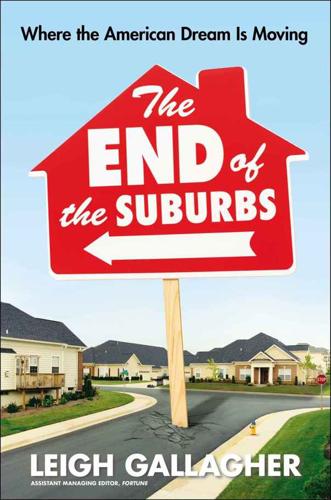
The End of the Suburbs: Where the American Dream Is Moving
by
Leigh Gallagher
Published 26 Jun 2013
This order, she wrote, is “composed of movement and change, and although it is life, not art, we may fancifully call it the art form of the city and liken it to the dance—not to a simple-minded precision dance with everyone kicking up at the same time, twirling in unison and bowing off en masse, but to an intricate ballet in which the individual dancers and ensembles all have distinctive parts which miraculously reinforce each other and compose an orderly whole. The ballet of the good city sidewalk never repeats itself from place to place, and in any one place is always replete with new improvisations.” Raymond Tucker, the mayor of St. Louis: Jackson, Crabgrass Frontier, p. 270. Even Victor Gruen: M. Jeffrey Hardwick, Mall Maker: Victor Gruen, Architect of an American Dream (University of Pennsylvania Press, 2004). In a speech Gruen gave in London in 1978 called “The Sad Story of Shopping Centres,” he further explained that Americans had corrupted his vision. Speaking of a “tragic downgrading of quality,” he said the American pursuit of profits had derailed his vision and that the public should protest the further construction of shopping centers.
…
“The plain fact of the matter is that we just cannot build enough lanes of highways to move all of our people by private automobile and create enough parking space to store the cars without completely paving over our cities and removing all of the . . . economic, social, and cultural establishments that the people were trying to reach in the first place,” he said. Even Victor Gruen, the Austrian-born architect considered the inventor of the modern-day shopping mall, soon came to abhor the impact of his creation, describing them as early as 1978 as “land-wasting seas of parking.” Whatever the critics say, it is important to note that there is, of course, a tremendous amount of appeal in suburban life.
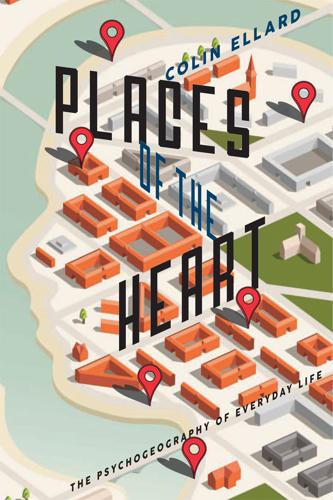
Places of the Heart: The Psychogeography of Everyday Life
by
Colin Ellard
Published 14 May 2015
The first of these, describing her remarkable early life and some of her insights about animals, is Emergence: Labeled Autistic (Grand Central Publishing, New York, 1996). 13Bill Friedman’s bible of casino design is Designing Casinos to Dominate the Competition: The Friedman International Standards of Casino Design (Institute for the Study of Gambling and Commercial Gaming, Las Vegas, 2000). 14Karen Finlay’s group at the University of Guelph have explored the effects of casino design on impulsivity in gambling and the role of gender in an article titled “Casino Décor Effects on Gambling Emotions and Intentions,” published in Environment and Behavior (2009, Volume 42, pages 542–545). 15M. Jeffrey Hardwick has explored Victor Gruen’s fascinating life in his book Mall Maker: Victor Gruen, Architect of an American Dream (University of Pennsylvania Press, Philadelphia, 2003). Malcolm Gladwell wrote about Gruen’s influence on American architecture in an article in the New Yorker titled “The Terrazzo Jungle,” published in the March 15, 2004 issue. Available at: http://www.newyorker.com/magazine/2004/03/15/the-terrazzo-jungle 16The role of affect in impulse purchasing is described in a 2008 paper by David Silvera, Anne Lavack and Fredric Kropp, titled “Impulse Buying: The Role of Affect, Social Influence, and Subjective Wellbeing,” in the Journal of Consumer Marketing (2008, Volume 25, pages 23–33). 17The neurochemistry of impulsivity in rats is described in an article by Marcel van Gaalen, Reinout van Koten, Anton Schoffelmeer and Louk Vanderschuren in an article titled “Critical Involvement of Dopaminergic Neurotransmission in Impulsive Decision Making,” in Biological Psychiatry (2006, Volume 60, pages 66–73). 18A wealth of information about Paul Ekman and his current work on the use of facial expression analysis—an approach that he pioneered in a fruitful life work, is described at his website: http://www.paulekman.com/.
…
Selfridge insisted on close contact between shoppers and the wares available at the store, fastidious customer service, and physical design elements such as comfortable furnishings, extensive glass cabinetry that made the wares easy to see, and exciting exhibitions (for example, an entire airplane was once on display inside Selfridge’s), all of which, reminiscent of some of the design features of modern casinos, were intended to keep the shopper inside the store for as long as possible. Some of the same kinds of design principles were invoked in the first shopping malls—very much an American invention and owing much to the architectural practice and theory of one remarkable individual, the Austrian architect Victor Gruen. Gruen fled pre–World War II Vienna as a young man and recent trainee in architecture and made his way to New York City, where he worked for some time as a cabaret performer. He won a small design job for an acquaintance who owned a Fifth Avenue leather goods shop in which he rethought the display elements in such a way as to break the mold of the fashion of the times—monolithic and impermeable street façades more like today’s bank headquarters than alluring retail establishments.
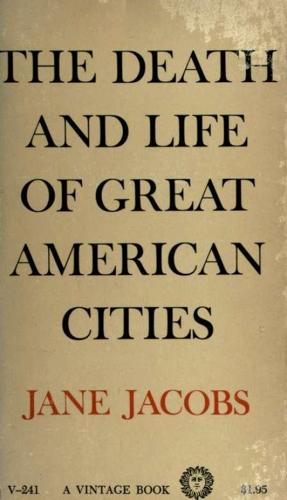
The death and life of great American cities
by
Jane Jacobs
Published 1 Nov 1961
In particular I am grateful for information, aid or criticism given by the following persons: Saul Alinsky, Norris C. Andrews, Edmund Bacon, June Blythe, John Decker Butzner, Jr., Henry Churchill, Grady Clay, William C. Crow, Vernon De Mars, Monsignor John J. Egan, Charles Farnsley, Carl Feiss, Robert B. Filley, Mrs. Rosario Folino, Chadbourne Gilpatric, Victor Gruen, Frank Havey, Goldie Hoffman, Frank Hotchkiss, Leticia Kent, William H. Kirk, Mr. and Mrs. George Kostritsky, Jay Landesman, The Rev. Wilbur C. Leach, Glennie M. Lenear, Melvin F. Levine, Edward Logue, Ellen Lurie, Elizabeth Manson, Roger Montgomery, Richard Nelson, Joseph Passonneau, Ellen Perry, Rose Porter, Ansel Robison, James W.
…
To be sure, the streets of eighteenth- and nineteenth-century cities were usually well adapted, as streets, to the uses of people afoot and to the mutual support of the mingled uses bordering them. But they were miserably adapted, as streets, to horse traffic, and this in turn made them poorly adapted in many ways to foot traffic too. Victor Gruen, who devised a plan for an automobile-free downtown for Fort Worth, Texas, about which I shall say more later in this chapter, prepared a series of slides to explain his scheme. After a view of a street with a familiar-looking automobile jam, he showed a surprise: just about as bad a jam of horses and vehicles in an old photograph of Fort Worth.
…
Otherwise, the necessary parking, garaging and access arteries around the pedestrian preserves reach such unwieldy and deadening proportions that they become arrangements capable only of city disintegration, not of city saving. The most famous of pedestrian schemes is the Gruen plan for the downtown of Fort Worth. The firm of Victor Gruen Associates, architects and planners, proposed that an area of roughly a square mile be circled with a ring road feeding into six huge, oblong garages, holding ten thousand cars each, which would each penetrate from the ring-road perimeter deep into the downtown area. The rest of the area would be kept free of automobiles and would be intensively developed as a downtown of mixed uses.
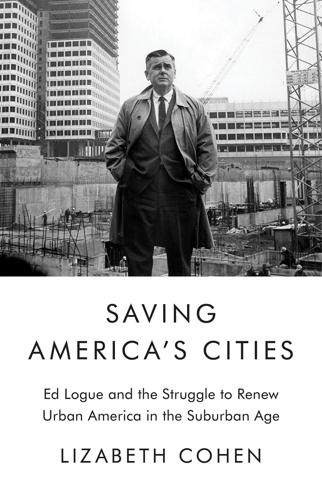
Saving America's Cities: Ed Logue and the Struggle to Renew Urban America in the Suburban Age
by
Lizabeth Cohen
Published 30 Sep 2019
Robert Gladstone’s report was Downtown Boston Market Studies, 1963. For an astute observation of the work of the CCBD and the general situation in Boston’s downtown, see McQuade, “Boston: What Can a Sick City Do?,” 166. 13. Victor Gruen, The Heart of Our Cities: The Urban Crisis—Diagnosis and Cure (New York: Simon and Schuster, 1964), 321–26. For Gruen’s stillborn plan for Fort Worth, see M. Jeffrey Hardwick, Mall Maker: Victor Gruen, Architect of the American Dream (Philadelphia: University of Pennsylvania Press, 2004), 166–92. 14. Saint, “Downtown Business Area Changes.” 15. My argument resembles that of John H. Mollenkopf, The Contested City (Princeton, NJ: Princeton University Press, 1983), who suggests that “political entrepreneurs” like Collins and Logue used government intervention to draw capitalists to their own objectives and did not simply do their bidding. 16.
…
Fortune noted the rarity of this collaboration between Jordan Marsh and Filene’s: “These mighty two merchants put their renowned rivalry aside temporarily and together made the rounds of the stores, the banks, the newspapers, and other businesses in the area ‘hat in hand’ … and came back with a good hatful of funds—$250,000—for replanning the whole district.”10 Fortune may not have realized how alarming downtown retailers had found the closing in 1961 of four large stores doing $50 million annually, which motivated them to dig uncharacteristically deep into their pockets.11 Having learned a lesson from the resistance of many local New Haven merchants to redevelopment, Logue let Boston’s retailers recommend to the BRA the extent of change in the retail district, the most desirable mix of large and small stores, and solutions to the always-sticky problem of temporary relocations. The CCBD used its quarter million dollars to hire a commercial architect and urban planner, Victor Gruen, and a Washington economist, Robert Gladstone, whom it charged with analyzing potential growth in the downtown Boston market.12 Gruen was surprised at what he called the “pattern of cooperation” between the CCBD and the BRA. No stranger to the kind of conflicts that had wracked New Haven and his own Fort Worth, Texas, where he had struggled—unsuccessfully—to implement a futuristic downtown plan, Gruen appreciated the Boston agreement “that whatever is planned must be acceptable to both parties.”13 The Boston Herald likewise remarked on Logue’s unusual restraint in approaching the planning of the retail core, with “a caution untypical of his usual drive to get things done, now if not sooner, as if there was a ‘proceed cautiously’ sign on the central business district so as to disrupt operations as little as possible.”14 Logue acknowledged to Monsignor Lally shortly before the public unveiling of the CCBD’s proposal in May 1967 that while planning for the CBD had taken longer than he would have liked, he thought that “the result has been to get support and depth from the retailers.”
…
Collins, February 5, 1963, “Status Report—Downtown Plan,” EJL, Series 6, Box 152, Folder 482; CCBD and BRA, “Recommendations Concerning the Interim Report for the Central Business District Project,” February 19, 1963, EJL, Series 6, Box 152, Folder 485; Memo to Ed Logue from Robert Hazen, October 22, 1963, “CBD Status and Recommendations,” EJL, Series 6, Box 152, Folder 485; Memo from Brimley Hall to Robert G. Hazen, “CCBD Executive Committee Meeting with Victor Gruen—August 10, 1964,” and Memo to Logue from Robert G. Hazen, December 11, 1964, EJL, Series 6, Box 153, Folder 501; “The Downtown Area: How to Clean It Up—and Make It Pay,” AF 120 (June 1964): 100–101; “CCBD,” EJL, Series 6, Box 153, Folder 501; Memo to Board of Directors, CCBD from Robert G. Hazen, March 15, 1965, “Status Report—CBD and Related Development and Transportation Projects,” EJL, Series 6, Box 153, Folder 502; Memo from Robert G.

What's Mine Is Yours: How Collaborative Consumption Is Changing the Way We Live
by
Rachel Botsman
and
Roo Rogers
Published 2 Jan 2010
Mindless spending is the “I don’t know what I spent my money on” type of spending that can take the form of aimlessly wandering around the shopping mall or popping into shops on your lunch hour and coming home with things you never intended to buy. The moment when a person shifts from being a conscious consumer shopping for a specific item to an impulse buyer has been named the Gruen Transfer, after architect Victor Gruen, who constructed the first shopping mall in 1956.29 Gruen’s original vision for the mall was to create an “idyllic shopping environment” and a “kernel of the community”—a grand plan far removed from the disorienting and sprawling maze we experience today. Latest and greatest spending translates into “I’ve got to get it because it is bigger (or smaller), better, faster, or even just newer.”
…
Diderot, Denis Diderot Effect Dim Dom Diners Club disposable goods mass production of obsolescence and diversified access Dixie Cups dolphins, as collaborative Duvall, Richard Dyfedpotter Easterbrook, Greg eBay Ecology of Commerce, The (Hawken) Economist Eco-Patent Commons Eldredge, Niles Ellmer, Rich enhanced communications environmental impacts: of consumerism of critical mass of dematerialization of redistribution markets of reuse and recycling Etsy extended-life PSS Facebook fairness Fake, Caterina farmers’ markets farming and gardening FarmVille Fast Company Fenton, Casey Fight Club Flanner, Ben Flickr fluidity of use food economy, collaborative shifts in Ford, Bill Ford, Henry Ford Motor Company Forshaw, Rob Fournier, Susan Foursquare Freecycle Freud, Sigmund Friedman, Milton Friedman, Thomas From Counterculture to Cyberculture (Turner) Fromm, Erich FutureShop (Nissanoff) Gallop, Cindy GDP fetishism Gebbia, Joe General Electric General Introduction to Psychoanalysis, A (Freud) General Motors Gettaround Gill, Rosemary Gladwell, Malcolm GNU project Goetz, Thomas GoGet GoLoco Goodwin, Liz Gorenflo, Neal Gould, Stephen Jay Gourdeau, Michel Great Depression Great Pacific Garbage Patch Great Washing Machine Debate Green Party (UK) Growing Chefs Gruen, Victor Gruen Transfer Guiry, Michael Güth, Werner Haidt, Jonathan Hamilton, Clive Hamilton Credit Corporation happiness, linked to consumption see also Haidt, Jonathon Haque, Umair Hardin, Garrett Hastings, Reed Hat Factory Hawken, Paul HearPlanet Heiferman, Scott Heinla, Ahti Hexamer, Mark Hierarchy of Needs Hill, Yvonne Hoffer, Dan Homer, Chris Howe, Jeff Hub Culture Hughes, Chris Humphrey, Stephen Hunnicutt, Benjamin Hunt, Bertha Hunt, Tara Huxley, Aldous Hyatt Rolling hyper-consumption rise of satisfaction and see also consumerism; materialism idling capacity IfWeRanTheWorld.com individualism, ownership and Industrial Revolution In the Bubble (Thackara) Intel Interface Internet: bartering efficiently on collaborative lifestyles and community re-establishment via dematerialization of goods via as democratic and decentralized and evolution of collaborative consumption idling capacity and mass collaboration on as modern commons peer-to-peer markets on reputation trail on swap trading expanded by transaction costs cut by iPod Irby, Weldon ITEX iTunes Jarvis, Jeff Jeffreys, Bruce Jevons, William Stanley Jordan, Chris Jumo Just One More Factor Kalin, Rob Kaminsky, Peter Kellogg, W.
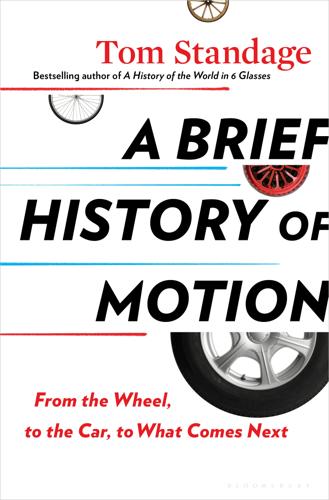
A Brief History of Motion: From the Wheel, to the Car, to What Comes Next
by
Tom Standage
Published 16 Aug 2021
And it contributed to the decline of drive-in theaters, because the land they occupied was more valuable to property developers as a location for shopping throughout the day, rather than for just showing movies in the evening. Besides, more and more people had televisions at home. One of the new shopping centers constructed during this boom was Southdale, which opened just outside Minneapolis in 1956. It was designed by Victor Gruen, an Austrian Jewish architect who had fled to America to escape the Nazis in 1938. Gruen later recalled that he arrived in America “with an architect’s degree, eight dollars, and no English.” He soon made a name for himself designing shop fronts and retail spaces. But as America suburbanized in the 1940s, Gruen disliked what he saw.
…
The American Historical Review, vol. 101, no. 4 (October 1996): 1082–1110. Harb, M., Xiao, Y., Circella, G. et al. “Projecting Travelers Into a World of Self-Driving Vehicles: Estimating Travel Behavior Implications via a Naturalistic Experiment.” Transportation, vol. 45 (2018): 1671–1685. Hardwick, J. M. Mall Maker: Victor Gruen, Architect of an American Dream. Philadelphia: University of Pennsylvania Press, 2010. Herlihy, D. V. Bicycle: The History. New Haven: Yale University Press, 2004. Hess, A. “The Origins of McDonald’s Golden Arches.” Journal of the Society of Architectural Historians, vol. 45, no. 1 (March 1986): 60–67.

Supertall: How the World's Tallest Buildings Are Reshaping Our Cities and Our Lives
by
Stefan Al
Published 11 Apr 2022
Situations like these achieve what shopping designers call the “Gruen transfer.” This term refers to the manipulation behind the mall’s undulating corridors. They aim to lure consumers from their original intentions, encouraging them to shop for shopping’s sake, rather than looking for something specific. The Gruen transfer was named after the architect Victor Gruen, who designed the first prototypical mall, Southdale Center in Minnesota, in 1956. This building pioneered combining all the elements of a mall that we now take for granted—including anchor stores, escalators, and an interior atrium—all under one air-conditioned roof. Ironically, Gruen, an Austrian immigrant, had more idealistic purposes.
…
Zhongjie Lin (London: Routledge, 2018), 33. 22.Robert C. Schmitt, “Implications of Density in Hong Kong,” Journal of the American Institute of Planners 29, no. 3 (1963): 210–17. 23.“Gloves to Muffle Stadium Applause,” South China Morning Post, October 13, 1994. 24.Jeffrey Hardwick, Mall Maker: Victor Gruen, Architect of an American Dream (Philadelphia: University of Pennsylvania Press, 2010), 216. 25.Yuko Okayasu, “Hong Kong Tops Global Ranking of Most Expensive Shopping Streets,” Cushman & Wakefield, November 14, 2019, accessed February 21, 2021, https://www.cushmanwakefield.com/. 26.Stefan Al, “Mall City: Hong Kong’s Dreamworlds of Consumption,” in Mall City (Honolulu: University of Hawaii Press, 2020), 1–20. 27.Nikolaus Lang et al., “Can Self-Driving Cars Stop the Urban Mobility Meltdown?”
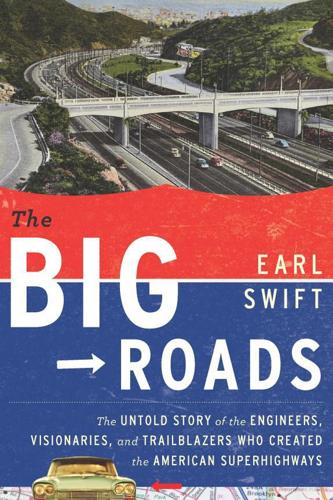
The Big Roads: The Untold Story of the Engineers, Visionaries, and Trailblazers Who Created the American Superhighways
by
Earl Swift
Published 8 Jun 2011
The Urban Land Institute observed that during the postwar boom, from 1948 to 1954, retail sales grew by 23 percent in central cities, and by a whopping 59 percent outside of them. In October 1956, Southdale, the world's first fully enclosed, climate-controlled shopping mall, opened in Edina, Minnesota, outside the Twin Cities.* Its architect, Austrian-born Victor Gruen, also opened three big suburban shopping centers that helped remake metropolitan Detroit. A month after Southdale's debut, Business Week worried there might be too many shopping centers in the suburbs. The ink on Ike's signature had barely dried. A city's circumferential interstate, the big ring road on which traffic orbited fifteen or twenty miles out of downtown, was usually among the first urban legs on which construction started.
…
Combine the suburbs' low-density housing with jobs scattered hither and yon, and no transit system—certainly not one on fixed rails, anyway—could do much to relieve dependence on the automobile, even if allowed to operate deep in the red. A few cities, notably San Francisco and Washington,D.C.,studied light rail or subway systems, regardless. Some others considered more radical fixes to their clogged streets. When utility officials in Fort Worth hired shopping mall pioneer Victor Gruen to rethink the city's downtown, he responded by banning cars altogether. Residents would drive to a beltway around the central business district, where they would park in one of a half-dozen huge garages, none more than three or four minutes' walk from dead center, and hoof it the rest of the way to jobs or stores.
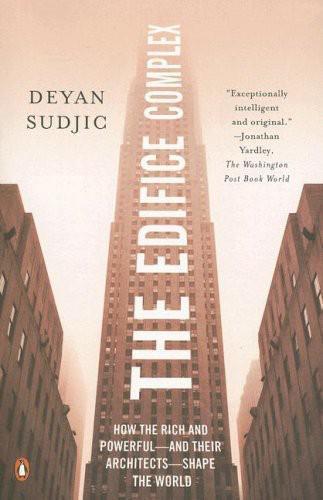
The Edifice Complex: How the Rich and Powerful--And Their Architects--Shape the World
by
Deyan Sudjic
Published 27 Nov 2006
Reza Khan was deposed by the British in 1941 when he started to become too close to Hitler’s Germany and began trying to play the Allies off against the Axis powers. But his son Mohammed Reza, installed with CIA help after his father abdicated, turned out to be even more interested in building. And, as the country’s oil reserves accumulated, he had the money to indulge his passion. In 1968 the new Shah commissioned Victor Gruen, the inventor of the modern shopping mall, to devise a strategy for Tehran’s future growth. Gruen identified an area of vacant land to the north of the city as a future government centre. Lord Llewelyn-Davies won the commission to plan this vast tract of empty land in detail, after an invited competition in 1975.
…
He did however accept the invitation of Jean Chrétien, Canada’s prime minister – issued, so Gehry says, in the middle of a long-distance telephone conversation about ice hockey – to take up Canadian citizenship again. Like that of Louis Kahn or I. M. Pei, Gehry’s early architectural career gave few clues of what was to come. In between designing apartment buildings, jewellery stores and shopping centres for Victor Gruen, in what can only be called a commercial vernacular, Gehry started experimenting with cardboard furniture. His obsession with fish imagery in the 1980s, which included building a restaurant in Japan in the shape of a giant carp and creating a fish out of a cloud of steel mesh on the Barcelona waterfront, seemed to suggest that something Jungian and out of the ordinary was about to emerge.
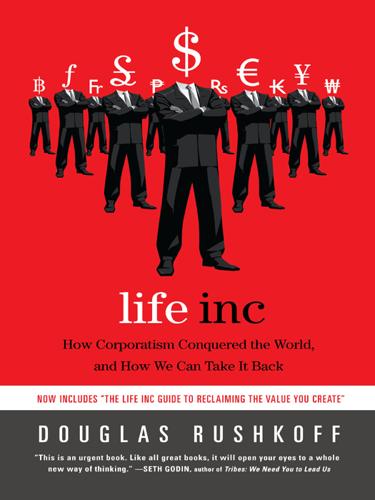
Life Inc.: How the World Became a Corporation and How to Take It Back
by
Douglas Rushkoff
Published 1 Jun 2009
The Chinese restaurant offered a self-contained black-lacquered and paper-lanterned world that bore no more resemblance to China than the horseshoes on the wall of a steak house had to cattle ranching, but such simulacra gave weary suburbanites ways to identify their experiences and who was providing them. This consumption was desocializing. A family might travel a whole day by car to visit just two or three of these simulated meccas, leaving at least one member dissatisfied. The only public space encountered between shopping experiences was the highway. An Austrian architect named Victor Gruen saw a better way. Having foreseen the loss of cultural values Americans would suffer as a result of this decentralized shopping experience, he envisioned a way to re-create Main Street and the civility it promoted. His innovation, what we now call the shopping mall, was first introduced in 1956 to an affluent suburb of Minneapolis called Southdale.
…
Start with Gregory Zuckerman, “Trader Made Billions on Subprime,” The Wall Street Journal, January 15, 2008, Business section. 72 Membership in civic organizations Robert D. Putnam, Bowling Alone: The Collapse and Revival of American Community (New York: Simon & Schuster, 2000). 78 The Chinese restaurant offered Ada Louise Huxtable, The Unreal America: Architecture and Illusion (New York: The New Press, 1999). 78 An Austrian architect named Victor Gruen Douglas Rushkoff, Coercion (New York: Berkley Publishing Group, 1999). 82 The more a town Elizabeth Currid, The Warhol Economy: How Fashion, Art, and Music Drive New York City (Princeton, N.J.: Princeton University Press, 2007). CHAPTER FOUR Individually Wrapped 91 This idea inspired many poets Stephen Greenblatt, Renaissance Self- Fashioning (Chicago: University of Chicago Press, 1980). 91 Perspective painting meant Jan Goldstein, The Post-Revolutionary Self: Politics and Psyche in France (Cambridge: Harvard University Press, 2005).
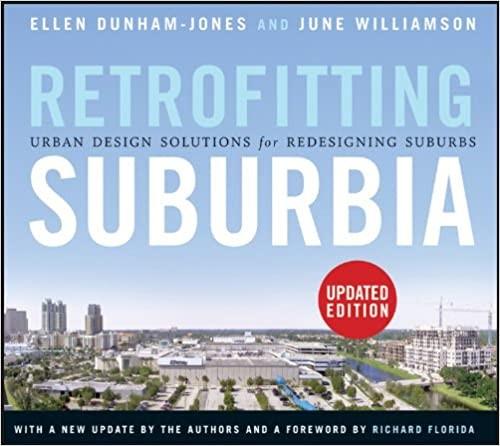
Retrofitting Suburbia, Updated Edition: Urban Design Solutions for Redesigning Suburbs
by
Ellen Dunham-Jones
and
June Williamson
Published 23 Mar 2011
A major facelift, set to be complete in 2008, will upgrade building façades, add new retail area, and convert the office building into a boutique hotel (converting the mall into a lifestyle center), but the green mall spaces will remain. Most of the mall developments that followed Park Forest Plaza, such as Victor Gruen’s Northgate in Seattle (1950) and Southdale Center in Edina, Minnesota (1956), assumed that patrons would arrive by car and sought to maximize traffic circulation patterns on the mall periphery and parking lots, while focusing on the pedestrian shopper within. This, after all, was the supposed advantage of the “rational” separation of the two.
…
Except in the five states that have adopted broader protection for free speech, the Court ruled that as privately owned places, they are exempt from the U.S. Constitution’s protections of political speech. See Margaret Kohn, Brave New Neighborhoods: The Privatization of Public Space (New York: Routledge, 2004). 9 Gregory Randall, America’s Original GI Town: Park Forest, Illinois (Baltimore: Johns Hopkins University Press, 2000), 140–156. 10 Victor Gruen and Larry Smith, Shopping Towns USA: The Planning of Shopping Centers (New York: Reinhold, 1960). 11 Jonathan Miller, foreword to Greyfields into Goldfields: Dead Malls Become Living Neighborhoods, by Lee S. Sobel with Ellen Greenberg and Steven Bodzin, (San Francisco: CNU, 2002), 8. Other recent books that examine this phenomenon include David Smiley and Mark Robbins, eds., Sprawl and Public Space: Redressing the Mall (New York: NEA/Princeton Architectural Press, 2002) and F.
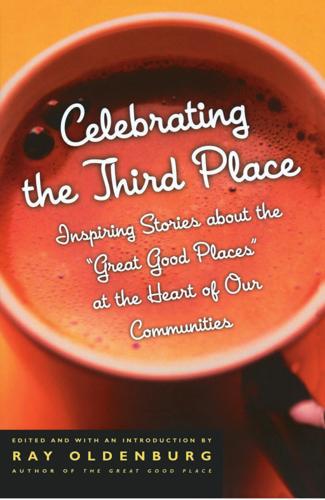
Celebrating the Third Place: Inspiring Stories About the Great Good Places at the Heart of Our Communities
by
Ray Oldenburg
Published 30 Nov 2001
During its construction, 8,000 people were forced out of their homes, the historic Jane Addams Hull House complex was destroyed, and the city was left with a cheap, sterile, tacky, fortress-like campus that looked like something a dinosaur coughed up after eating the United Nations Plaza. The campus design echoes what architect Victor Gruen, cited in Ray Oldenburg’s book, called “civic centers that are concentration camps for bureaucrats, who are thus prevented from mingling with common folks.” The construction of the UIC campus is an example of growth politics. Growth machines were created after World War II through coalitions between the federal government, urban mayors, large institutions, and local real estate developers as a means to funnel federal funds into the inner cities.

Age of the City: Why Our Future Will Be Won or Lost Together
by
Ian Goldin
and
Tom Lee-Devlin
Published 21 Jun 2023
Right now, the typical place to find these things is in gentrified inner city neighbourhoods, but already some suburbs are beginning to reinvent themselves: the term ‘hipsturbia’ has recently emerged to describe young and vibrant mixed-use districts in suburban areas.42 If they can pull off the transformation, suburbs will not only benefit from increased demand, but will also help to ease the pressure on inner city neighbourhoods that have become unaffordable to all but the highest paid. Long a symbol of the suburban lifestyle, the reinvention of malls offers an illustration of what is possible. The first indoor mall in the United States, the Southdale Center, was opened in Minnesota in 1956. More than simply a shopping destination, it was imagined by its designer, Victor Gruen, as a community space that would bring together the inhabitants of suburbia, and for a time it succeeded in doing exactly that.43 But the uniformity and overtly materialistic experience of malls is not in line with the bobo sensibility we described in Chapter 4. Moreover, the rise of online commerce has undermined the viability of many of the department stores that served as anchor tenants for malls.
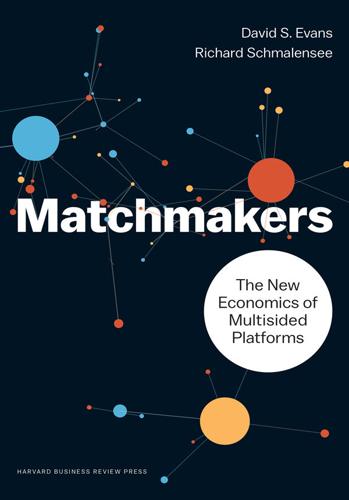
Matchmakers: The New Economics of Multisided Platforms
by
David S. Evans
and
Richard Schmalensee
Published 23 May 2016
It also meant working on the interior and exterior layout of the mall. In doing this, they could draw on decades of learning from other mall developers, going back to the Southdale Center, the very first modern shopping mall, which opened in Edina, Minnesota, in 1956 and was designed by the pioneering retail architect, Victor Gruen.4 All matchmakers, whether they operate physical or virtual places, face these same sorts of decisions. They need to figure out how to design their platforms to increase the chances that participants will be able to find each other and engage in mutually beneficial exchanges. They must construct the platform, whether from bricks or lines of code, and often develop tools that participants can use to find valuable matches.

Future Files: A Brief History of the Next 50 Years
by
Richard Watson
Published 1 Jan 2008
For example, 75% of people in Britain think that supermarkets like Tesco, which takes £1 for every £8 spent in Britain, have become too powerful and would support stricter government controls. This has not escaped the attention of the world’s largest retailer, which is testing smaller neighborhood stores dubbed “Small-Marts”. Maybe the future is stealth retail: shops that don’t operate like shops and malls that don’t look like malls. This is not a new idea. Back in the 1960s Victor Gruen, the architect of the modern mall, called for retailers to incorporate civic and educational aims, so that shopping malls and supermarkets would function more like oldfashioned town centers, with non-retail elements like schools, doctors, libraries, churches and sport facilities. For example, Swiss retailer Migros has created health and education centers.
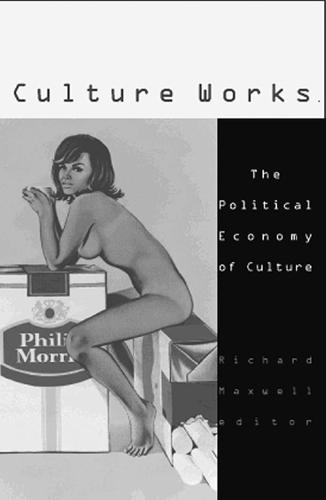
Culture works: the political economy of culture
by
Richard Maxwell
Published 15 Jan 2001
Of these, nearly 2,000 were regional malls larger than 400,000 square feet; 379 were supermalls of more than a million square feet.34 From the mid-1950s, the mall builders hired the best architects and elaborated the shopping-center form. The basic mall model was composed of small stores clustered around big anchor retailers, and unified by leasing policy. In 1956, the Viennese-born architect Victor Gruen introduced the idea of the indoor, inward-facing, climate-controlled environment at Southdale Plaza in Edina, Minnesota, a weatherproofed reproduction of the center city. As the mall form evolved, it was typically located outside cities on outlying highways, and designed to attract shoppers over regions of one hundred square miles or more.

The Human City: Urbanism for the Rest of Us
by
Joel Kotkin
Published 11 Apr 2016
The search for a planned utopia, he says, also ignores the “situational rhythm” that fits each specific place and responds to the demand of consumers in the marketplace. No surprise then that grand ideas, epitomized by soaring towers, often prove less successful than those more pragmatic, market-oriented efforts of, say, Victor Gruen to recreate the plaza and urban streetscape within the framework of modern-day suburbia. So rather than just focusing on grand narratives about how to transform the metropolis and its denizens, we need to pay more attention to what people actually do, what they prefer, and those things to which they can reasonably aspire.
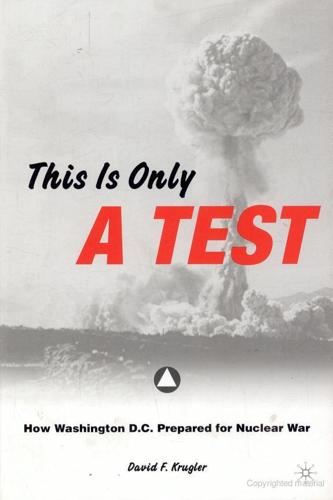
This Is Only a Test: How Washington D.C. Prepared for Nuclear War
by
David F. Krugler
Published 2 Jan 2006
Tobin, “The Reduction of Urban Vulnerability: Revisiting 1950s American Suburbanization as Civil Defense,” Cold War History 2, no.2 (January 2002): 1–32. Michael Quinn Dudley, “Sprawl as Strategy: City Planners Face the Bomb,” Journal of Planning Education and Research 21, no. 1 (Fall 2001): 54–5. For more on the perceived social and community benefits of dispersal, see Timothy Mennel, “Victor Gruen and the Construction of Cold War Utopias,” Journal of Planning History 3, no. 2 (May 2004): 116–50. Dudley, “Sprawl,” 56–7; Robert Wojtowicz, “Building Communities in the Twentieth Century,” Journal of Urban History 28, no. 6 (September 2002): 813–4 (the Stein quote is on 813); Richard Walker and Robert D.
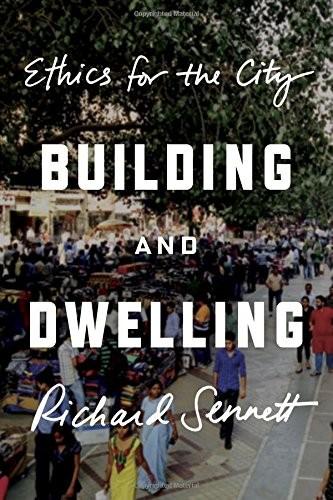
Building and Dwelling: Ethics for the City
by
Richard Sennett
Published 9 Apr 2018
Josep Lluís Sert, an émigré from fascism, had now become leader of Harvard’s architecture faculty; Sigfried Giedion also taught there; Corbusier, though not present, was, a few years later, to build the university’s greatest modern building, the Carpenter Center for the Visual Arts. The Chartists intersected with younger Americans like Victor Gruen, the father of the shopping mall; Edmund Bacon, the planning guru of Boston; political figures like David L. Lawrence, who in Pittsburgh practised grade-flat-and-build development. Liberal well-meaning set the tone; this was the American century at its apex, with all its New World idealism, confidence and can-do pragmatism.

City: A Guidebook for the Urban Age
by
P. D. Smith
Published 19 Jun 2012
Pomerantzev, its striking façade is nearly 800 feet long and its three floors contain some three hundred shops. A mall is an enclosed shopping centre. It extends the idea of the arcade and the bazaar on a vast scale. Today’s megamalls exceed a million square feet and contain not just stores and restaurants but multiplex cinemas, post offices, ice-skating rinks, even theme parks. Malls were pioneered by Victor Gruen, a Los Angeles architect inspired by Lewis Mumford’s criticism of the car’s impact on urban communities. He believed malls could become the new agoras or medieval market places. His design for the Southdale Shopping Center in Edina, Minnesota, was inspired by European arcades. Opened in 1956, it was the first enclosed shopping mall.